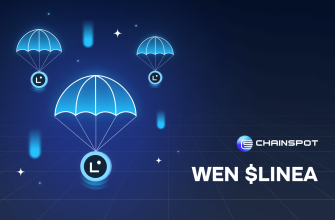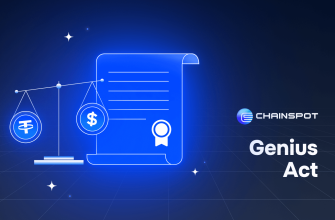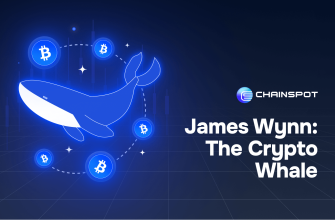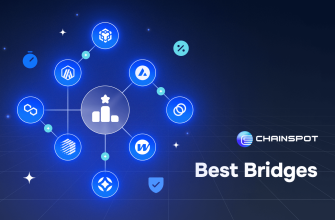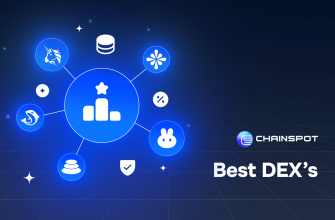The world of decentralized finance (DeFi) has revolutionized traditional financial systems by leveraging blockchain technology to provide transparent, secure, and efficient financial services.
One of the emerging innovations within DeFi is the concept of Decentralized Physical Infrastructure Networks (DePIN). DePIN aims to extend the principles of decentralization to physical infrastructure, creating a more robust and distributed network for various applications.
This article dives into the concept of DePIN, and explores the advantages and challenges of these networks within the crypto ecosystem.
Understanding DePINs
DePINs are decentralized networks that leverage blockchain technology to manage and facilitate physical infrastructure, such as telecommunications, transportation, and energy systems. Communities are incentivized with tokens to collaborate and build real-world solutions.
These networks utilize smart contracts, decentralized applications (DApps), and distributed ledger technology to automate processes, verify transactions, and ensure trust and transparency among participants. By decentralizing structural bottlenecks, DePINs aim to reduce reliance on centralized authorities and intermediaries, offering greater autonomy and control to users.
DePINs cover a wide range of decentralized infrastructure networks tailored to specific industries, from renewable energy grids to supply chain operations.
How DePINs Operate
DePINs function through a combination of blockchain technology, Internet of Things (IoT) devices, and decentralized governance protocols.
Smart contracts are deployed on blockchain networks to manage physical assets and infrastructure, such as energy grids, transportation systems, and supply chains.
IoT devices, equipped with sensors and connected to the blockchain network, collect real-time data on asset utilization, performance, and maintenance needs.
Decentralized governance models enable participants to collectively make decisions regarding asset management, protocol upgrades, and resource allocation.
Applications of DePINs
DePINs have diverse applications across various industries, including energy, logistics, telecommunications, and urban planning:
- Energy Sector: DePINs optimize electricity distribution and consumption through peer-to-peer energy trading and decentralized grid management. Projects like Power Ledger enable participants to trade renewable energy, optimize grid efficiency, and reduce reliance on centralized utilities.
- Logistics: DePINs enhance supply chain visibility and traceability, reducing inefficiencies and mitigating counterfeiting risks. VeChain, for instance, uses blockchain technology to track products throughout the supply chain, ensuring authenticity and provenance.
- Telecommunications: DePINs facilitate the creation of decentralized wireless networks, improving connectivity and reducing costs. Helium, for example, allows individuals to deploy wireless hotspots, creating a community-driven network for IoT devices.
- Data Storage and Computing: DePINs extend to decentralized data storage and computing networks. Projects like Filecoin allow users to rent out unused storage or computing power in exchange for tokens, reducing reliance on centralized servers and enhancing data security.
Examples of DePIN Projects
- Power Ledger: A blockchain-based energy trading platform enabling peer-to-peer renewable energy trading, grid optimization, and incentivization of renewable energy generation.
- VeChain: A blockchain platform focused on supply chain management and product traceability, enhancing efficiency and combating counterfeiting.
- Helium: A decentralized wireless network that allows users to provide and consume wireless connectivity through a blockchain-based system. By incentivizing individuals to deploy wireless hotspots, Helium creates a distributed network for IoT devices.
- IOTA: A distributed ledger technology designed for IoT and machine-to-machine communication, facilitating decentralized data transfer and microtransactions in smart cities and energy management.
Advantages and Disadvantages of DePINs
DePINs bring significant advantages by eliminating intermediaries, which fosters trust, transparency, and autonomy within various sectors. The decentralized nature of these networks reduces overhead costs, making services more affordable and accessible. Token incentives play a crucial role in encouraging participation and network growth, promoting a self-sustaining ecosystem.
However, DePINs also face notable challenges. Scalability remains a critical issue, as managing large transaction volumes and network congestion can be problematic. Furthermore, regulatory uncertainty poses a significant hurdle, as ambiguity in compliance and legal frameworks can deter investment and innovation. Addressing these challenges is essential for the successful implementation and widespread adoption of DePINs.
DePINs in Comparison to Other Decentralized Networks
- DePINs vs. DeFi: While DeFi focuses on decentralized financial services, DePINs extend decentralization to physical infrastructure networks, addressing broader challenges in energy, supply chain management, and IoT connectivity.
- DePINs vs. DeRENs: DePINs democratize access to essential services and infrastructure, while DeRENs (Decentralized Real Estate Networks) focus on revolutionizing property transactions through blockchain technology, offering secure and transparent processes.
Conclusion
Decentralized Physical Infrastructure Networks (DePINs) represent a groundbreaking innovation within the decentralized finance (DeFi) ecosystem. By extending the principles of decentralization to physical infrastructure, DePINs can enhance access to financial services, improve security and transparency, and promote efficient resource management.
Despite facing scalability and regulatory hurdles, DePINs have the potential to reshape industries ranging from energy and supply chain management to IoT connectivity.
As the ecosystem evolves, DePINs are poised to play a pivotal role in driving the adoption of decentralized technologies and transforming traditional business paradigms.






